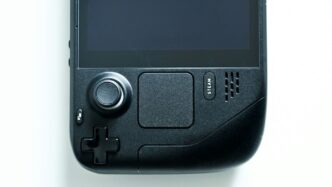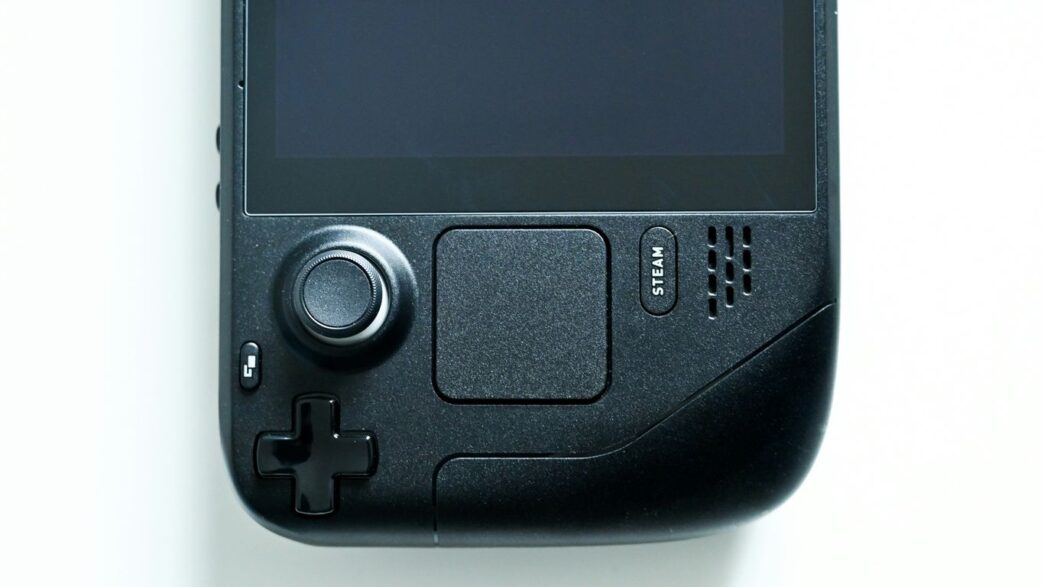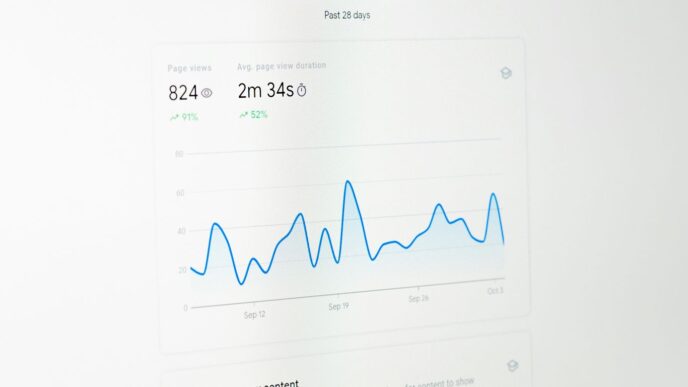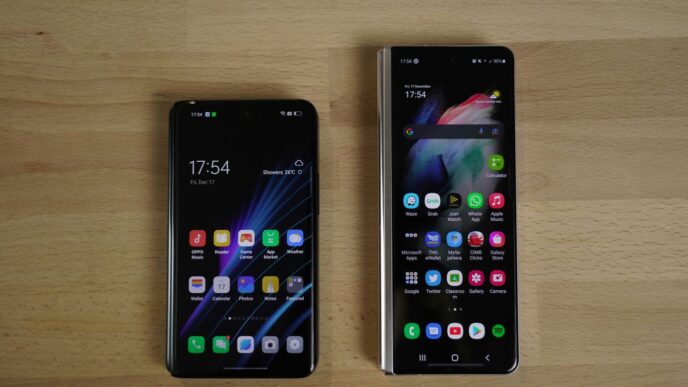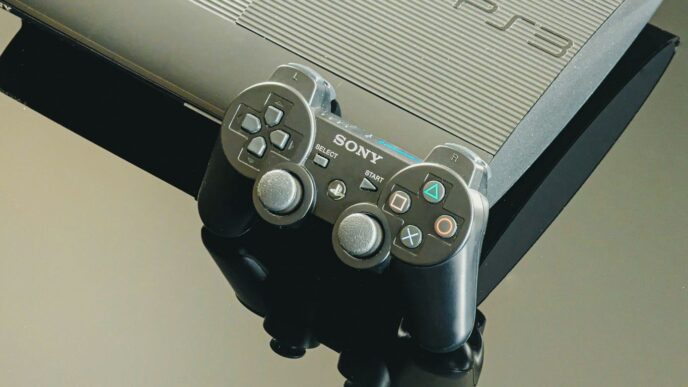Remember when handheld gaming meant a chunky Game Boy and a few pixelated games? Man, how times have changed. We’re talking about 2025 and beyond here, and the future of handheld gaming is looking seriously impressive. It’s not just about playing on the go anymore; these devices are packing some serious punch, blurring the lines between portable and home consoles. Let’s take a look at what’s coming and why it’s a big deal for gamers everywhere.
Key Takeaways
- Handheld gaming devices are getting incredibly powerful, almost matching home consoles and PCs.
- Many new handhelds are designed to work both on the go and connected to a TV, offering more flexibility.
- Windows-based handheld PCs are becoming a popular option, giving access to a wider range of games.
- Cloud gaming is making it easier to play more demanding games on less powerful handhelds.
- There’s a wide variety of handhelds available, from cheap emulation devices to high-end gaming PCs, catering to different budgets and needs.
The Evolving Landscape Of Handheld Gaming
From Humble Beginnings To Powerful Portables
Remember the days of the Game Boy? Those chunky cartridges and that green-ish screen were revolutionary back then, but they seem like ancient history now. Handheld gaming has come a long, long way. What started as simple devices for passing the time on a bus ride has transformed into serious gaming machines. We’ve seen everything from the Sega Game Gear and Atari Lynx to Sony’s PSP, which really pushed the envelope with portable 3D gaming. It’s wild to think how far we’ve come from those early days.
The Resurgence Of Dedicated Handheld Devices
For a while there, it felt like home consoles and PC gaming were the only games in town. But handhelds are back, and they’re not just making a comeback; they’re leading the charge. Devices like the Nintendo Switch really kicked things off, showing that people wanted powerful gaming experiences they could take anywhere. Now, we’re seeing a whole new wave of dedicated handhelds hitting the market. These aren’t just toys; they’re powerful pieces of tech designed for serious gaming.
Here’s a quick look at how the market has shifted:
- Early Days: Simple graphics, limited game libraries (e.g., Game Boy).
- Mid-Era: Introduction of 3D graphics and more complex games (e.g., PSP).
- Modern Era: High-definition displays, powerful processors, and hybrid capabilities (e.g., Steam Deck, Asus ROG Ally).
Redefining Gaming On The Go
This shift means gaming isn’t just something you do when you’re sitting on the couch anymore. You can play complex PC games or console-quality titles while commuting, traveling, or just relaxing in a different room of the house. It’s changing how we play and even who plays. The idea of gaming being limited to a specific demographic or location is fading fast. The future is definitely portable, and it’s exciting to see where it goes next.
Powerhouse Hardware Driving The Future Of Handheld Gaming
Next-Generation Processors And Graphics
Forget those days of chunky pixels and slow frame rates. The handhelds hitting the market now and in the near future are packing some serious punch. We’re talking about processors that used to be found only in high-end desktop PCs. This means you can expect games to look and run better than ever before on a portable device. Think smoother gameplay, more detailed environments, and effects that used to be reserved for your living room console. It’s a big leap, and it’s changing what we expect from gaming on the go. Devices like the GPD WIN MINI 2025 are already showing what’s possible, with powerful AMD Ryzen processors and integrated RDNA graphics that can handle demanding titles.
Enhanced Display Technologies
It’s not just about what’s under the hood; what you’re looking at matters too. Screens are getting bigger, brighter, and sharper. We’re seeing more high-resolution displays with faster refresh rates, making everything from fast-paced shooters to visually rich RPGs look absolutely stunning. HDR support is also becoming more common, bringing out deeper colors and better contrast. This means games will pop off the screen, whether you’re playing in a dimly lit room or out in the sun.
Innovative Cooling Solutions
All this power generates heat, and that’s where clever engineering comes in. Manufacturers are developing new ways to keep these portable powerhouses cool. This includes things like advanced fan systems, vapor chambers, and even passive heatsinks. Keeping the components at optimal temperatures is key to maintaining performance over long gaming sessions. Nobody wants their game to stutter because the device is overheating. So, while you might not see the cooling tech directly, it’s working hard behind the scenes to make sure your gaming experience stays smooth and consistent.
The Convergence Of Handhelds And Home Consoles
It feels like just yesterday we were talking about handhelds as a separate category, something you’d pull out on a plane or during a long commute. But things are really changing, aren’t they? The lines between what you play on your big TV and what you can take with you are getting blurrier by the day. We’re seeing devices that aren’t just good for gaming on the go, but are actually powerful enough to rival your home setup.
Hybrid Devices For Seamless Play
This is where things get really interesting. Think about the Nintendo Switch – it was a game-changer, right? You could play it docked on your TV and then just pick it up and keep playing on the train. Now, other companies are jumping on board with similar ideas, or even more advanced versions. We’re seeing more powerful handheld PCs that can connect to external displays, essentially turning them into a makeshift desktop or console when you’re home. It means you can start a game on your couch and then, without missing a beat, take it with you to finish it in bed or at a friend’s house. This kind of flexibility is what gamers have been asking for, and it’s finally here.
Expanding The Reach Of Gaming Ecosystems
When a device can do both home and portable gaming, it naturally pulls more people into a company’s gaming world. If you buy a hybrid console, you’re not just buying a handheld; you’re buying into a whole library of games and services. This makes it easier for companies to keep you engaged. For example, a new handheld might give you access to the same online multiplayer services as a home console, or let you play games from your existing digital library. It’s all about making your games accessible wherever you are. The connected game console market is projected to see significant growth, with hybrid consoles expected to expand at a remarkable CAGR from 2025 to 2034. The wireless segment currently holds the largest market share in terms of connectivity. This trend is only going to get bigger.
The Impact On Gaming Culture
This shift is changing how we think about gaming. It’s not just about sitting in front of a TV anymore. Gaming is becoming more integrated into our daily lives. You might see people playing complex PC games on a handheld while waiting for a bus, or friends gathering around a portable screen for a multiplayer session. It’s making gaming more social and more visible. Plus, with more powerful handhelds, the types of games being developed for them are also evolving. We’re seeing more ambitious titles that used to be reserved for home consoles now making their way to portable devices. This means a wider variety of experiences are available to everyone, no matter where they are.
Emerging Trends In Handheld Gaming Technology
The Rise Of Windows-Based Handheld PCs
It feels like just yesterday that handheld gaming meant a chunky plastic device with a few buttons and a monochrome screen. Now? We’re seeing full-blown Windows PCs shrunk down into portable form factors. Devices like the ASUS ROG Ally and the Lenovo Legion Go aren’t just playing mobile games; they’re running the same PC titles you’d play on your desktop. This is a pretty big deal because it means you can take your Steam library, or whatever else you’ve got installed on your Windows machine, pretty much anywhere.
These machines are packing serious hardware, often with AMD Ryzen processors and decent amounts of RAM, aiming to replicate a mid-range gaming desktop experience on the go.
- Performance: They can handle many modern PC games, though you might need to tweak settings for smoother frame rates.
- Versatility: Beyond gaming, they function as regular Windows PCs, letting you browse the web, use productivity apps, and more.
- Compatibility: Access to a vast library of PC games and software without needing separate mobile versions.
Of course, this power comes with a few trade-offs. Battery life can be a concern, and these devices tend to be on the pricier side, often costing $400 and up. But for gamers who want their PC library in their pocket, it’s a game-changer.
Advancements In Emulation Capabilities
Beyond the latest AAA titles, there’s a massive appetite for retro gaming. Emulation devices, which let you play games from older consoles like the NES, PlayStation 1, or even the Nintendo 64, are getting really good. We’re seeing more affordable handhelds that are specifically designed for this purpose. They might not run the newest PC games, but they can often handle a wide range of classic systems with impressive accuracy.
It’s not just about playing old games, though. The software used for emulation is getting smarter, too. Developers are constantly working to improve performance, add new features like save states and graphical filters, and make the whole process easier for users.
- Wider System Support: Emulators are becoming available for more and more classic consoles.
- Improved Performance: Games run smoother and look better than ever on dedicated emulation handhelds.
- User-Friendly Interfaces: Getting older games up and running is becoming less of a technical hurdle.
This trend is making classic gaming more accessible than ever, allowing a new generation to experience the games that paved the way for today’s industry.
The Role Of Cloud Gaming Integration
Cloud gaming services like Xbox Cloud Gaming, GeForce NOW, and PlayStation Plus Premium are also finding a natural home on handheld devices. Instead of relying solely on the device’s internal hardware, these services stream games from powerful servers to your handheld. This means you can play graphically demanding games on relatively modest hardware, as long as you have a stable internet connection.
Many of the newer handhelds are built with this in mind, offering better Wi-Fi connectivity and optimized interfaces for cloud gaming platforms. It opens up a huge library of games without requiring massive downloads or powerful local hardware.
- Access to AAA Titles: Play high-end games that wouldn’t normally run on a handheld.
- Reduced Storage Needs: Games are streamed, not stored locally, saving precious device space.
- Cross-Platform Play: Often allows you to pick up where you left off on another device.
While a strong internet connection is key, cloud gaming integration is definitely a trend that’s shaping how we play games on the go, blurring the lines between what’s possible on a dedicated handheld versus a home console.
Key Players And Upcoming Innovations
It feels like every major tech company is jumping into the handheld gaming scene these days, and honestly, it’s pretty exciting to watch. We’ve got the usual suspects, of course, but there are also some really interesting new players making waves.
Nintendo’s Next Move In The Handheld Arena
Nintendo is always a big question mark, right? They’ve been pretty quiet about what’s next after the Switch, but everyone’s expecting something big. Rumors are flying about a successor, maybe called the Switch 2, that could pack a serious punch. We’re hoping it keeps that hybrid magic, letting you play on the go or dock it for your TV. It’s hard to say for sure what they’re planning, but you know Nintendo will do something to shake things up.
Competitors’ Bold Entries Into The Market
This is where things get really interesting. We’re seeing a lot of PC hardware giants like Asus, MSI, and Lenovo throwing their hats into the ring with Windows-based handheld PCs. Devices like the Asus ROG Ally X and the MSI Claw A8 are pushing the boundaries with powerful AMD processors and bigger screens. For example, the MSI Claw A8 is slated to feature the Ryzen Z2 Extreme processor and Wi-Fi 7, aiming for a premium experience. Then there’s Acer with its Nitro Blaze line, offering larger displays and impressive specs, though at a higher price point. It’s a crowded market, and these companies are clearly trying to find their niche. You can check out some of the top gaming handhelds for 2025 to get a feel for what’s out there.
| Device Name | Processor | Display Size | Estimated Price | Release Window |
|---|---|---|---|---|
| MSI Claw A8 | Ryzen Z2 Extreme | 8-inch | ~$970 | 2025 |
| Acer Nitro Blaze 11 | Ryzen 8040 Series | 11-inch | ~$1,099 | 2025 |
| ROG Ally X | Ryzen AI Z2 Extreme | 7-inch | ~$999 | October 2025 |
Third-Party Developers’ Creative Offerings
Beyond the big names, there’s a whole ecosystem of smaller companies and developers creating some really unique devices. We’re seeing a rise in specialized emulation handhelds, like those from Retroid and Anbernic, that focus on bringing retro gaming to life. Some of these are surprisingly capable for their size and price. Plus, there’s the growing trend of devices running Valve’s SteamOS, like the upcoming Lenovo Legion Go S. This opens up the possibility for more non-Valve hardware to tap into the Steam library, which is a huge deal for PC gamers who want that portable freedom. It’s this mix of established giants and innovative smaller outfits that’s really driving the handheld market forward.
Accessibility And Affordability In Handheld Gaming
Diverse Price Points For Every Gamer
It’s pretty cool how handheld gaming isn’t just for folks with deep pockets anymore. You can find devices that fit pretty much any budget these days. We’re talking about everything from super cheap Android-based devices that are great for casual games and older titles, all the way up to powerful Windows handheld PCs that can run pretty much any PC game you throw at them. This wide range means more people can get in on the fun, no matter how much they want to spend.
The Growing Market For Emulation Devices
Emulation devices are a big deal for keeping older games alive and accessible. These gadgets let you play classics from consoles like the NES, Game Boy, or even the PlayStation 1. They’re often way cheaper than buying original hardware and games, and they pack a lot of power for their size. You can find some really solid options for under $100, which is awesome for anyone who wants to revisit their childhood gaming memories without breaking the bank.
Here’s a quick look at how prices can stack up:
| Device Type | Typical Price Range | Primary Use Cases |
|---|---|---|
| Basic Android Emulators | $50 – $150 | Retro games, Android games, cloud streaming |
| Mid-Range Emulation Handhelds | $150 – $300 | More powerful retro emulation, some indie PC games |
| Windows Handheld PCs | $400 – $1000+ | Modern PC games, extensive emulation, productivity |
Balancing Performance With Cost
Finding that sweet spot between what a device can do and what it costs is key. For example, you might see a device that costs $200 and seems okay, but then another one for $250 blows it out of the water in terms of performance and build quality. It’s not always about getting the cheapest thing; it’s about getting the best value for your money. Think about what you actually want to play. If you’re just looking to play some old Mario games, you don’t need a $1000 gaming PC in your pocket. But if you want to play the latest AAA PC titles on the go, you’ll probably need to spend more. It’s all about matching your needs to the right device without overspending.
The Road Ahead
So, what does all this mean for the future of gaming? It’s pretty clear that handhelds aren’t just a passing trend. They’ve become a major player, offering power and flexibility we haven’t seen before. Whether you’re into the latest PC games on the go or revisiting old favorites, there’s a device out there for you, and more are coming. It feels like we’re just getting started, and the next few years are going to be really interesting for anyone who loves to play games, no matter where they are.
Frequently Asked Questions
Are handheld gaming devices getting more powerful?
Yes, absolutely! Handhelds in 2025 are packing seriously powerful computer parts, like special chips and graphics cards, that used to only be in big home gaming systems or computers. This means they can play much more complex and amazing-looking games than ever before.
Can I play games on my handheld that I usually play on my home console?
Many new handhelds are designed to be like mini versions of home consoles. Some can even connect to your TV, letting you switch from playing on the go to playing on a big screen without missing a beat. It’s all about making your gaming experience super flexible.
What are Windows-based handheld PCs?
These are like small, portable computers made specifically for gaming. They run the Windows operating system, just like many laptops and desktops. This means you can play a huge variety of PC games on them, not just games made for specific handhelds.
Is cloud gaming important for handhelds?
Cloud gaming is becoming a big deal. It lets you play games that are running on powerful servers somewhere else, streaming them to your handheld. This means even less powerful handhelds can play really demanding games, as long as you have a good internet connection.
Are there still simple handhelds for playing old games?
Definitely! While the high-end handhelds are getting super advanced, there’s still a great market for devices that are perfect for playing classic games from older consoles. These are often more affordable and easier to use if you just want to relive some gaming memories.
Will handhelds be more expensive in the future?
The market is becoming more diverse. You’ll find a wide range of prices, from cheaper devices for classic games to high-end portable PCs that cost more. The goal is to offer options for everyone, whether you’re on a tight budget or looking for the absolute best gaming experience on the go.

